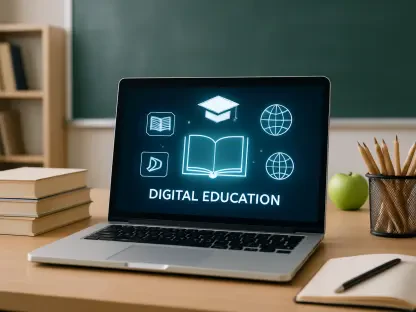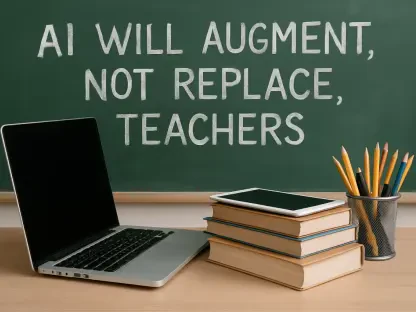Listen to the Article
Corporate learning is now changing. The rapid advancement of technology and employees’s changing expectations call for a shift in workplace training. Organizations that adopt innovative training approaches not only enhance their employees’ skill sets but also boost their job satisfaction. This leads to improved performance and increased employee retention.
As this landscape becomes inevitable, companies must implement effective training strategies that equip employees with the necessary skills to excel and adapt to their roles, ensuring sustained productivity and growth in a dynamic work environment. However, because they are also working, these modern learners need training that is flexible, personal, and fun, so old methods may not work for them.
To meet these new needs, companies are now using new tactics and technologies that can help their workers keep up with their lifelong learning. From Artificial Intelligence (AI) technologies that improve the educational experience to video-based training, corporate development is not just for classrooms anymore. It is becoming more fun, interactive, and personalized to fit workers’ needs.
Here are five significant trends that will influence the evolution of corporate learning in the coming year and beyond, highlighting their potential benefits for organizations and employees alike.
How Ai is Boosting Corporate Learning
AI is changing how companies create, deliver, and analyze learning content. AI does not replace human trainers, but it can make learning better in many ways.
“AI will strengthen a lot of the processes we already have established, whether it’s the creation of material, analyzing reports, or understanding outcomes from different sessions,” says Eilert Hanoa, Kahoot! CEO. According to Forbes, AI can make the learning process better by personalizing it, analyzing how learners respond to it, and changing the experiences to fit their individual needs.
However, companies should keep in mind that AI alone is insufficient, Hanoa says. This technology should be connected to the right resources to provide employees with a complete learning experience.
Personalized Corporate E-learning
According to a study, personalized corporate e-learning can make learning plans for each worker, looking at what they are like, what their unique capacities are, and what career goals they have. This new way of learning can help employees acquire more knowledge and skill, according to their own preferences. It can also help workers become ready to take on different roles and responsibilities.
Companies that invest in personalized corporate e-learning have some important advantages:
Their employees are generally happier and more engaged;
Workers will have skills that fit the companies’ needs;
Productivity and innovation tend to grow within these companies.
An important part of personalized corporate e-learning is making profiles of what each worker can do. By looking at a worker’s current skills and what they need for the job they want, companies can make learning plans that keep workers engaged and interested to learn more while the business gets better.
Blended Learning
At its core, blended learning mixes traditional teaching with online tools, giving workers a flexible way to learn. This idea, now common in schools around the world, is also embraced by companies that feel traditional ways of learning are simply not enough in the digital age.
Blended learning at work can take various forms and include things like:
Live virtual classrooms: Employees can take part in real-time chats with their teachers and trainers;
Practical projects: Workers can actively take part in hands-on projects that promote company goals;
Online groups: Workers can share ideas, talk about new projects, and learn together;
Online teaching assistants: Employees can access the information they need on demand;
Learning management systems: Companies can see how their employees progress while learning and provide them with more help if needed;
Adaptive learning: Companies can use platforms that allow workers to skip what they know already, accelerating the learning journey;
Gamification: A process that uses competition, like scoreboards and prizes, to make learning fun.
By using these and other blended learning strategies, companies can make learning easy, useful, and fun.
Immersive Learning Experiences
Virtual Reality (VR) and Augmented Reality, also known as AR, are making training experiences real by letting workers experiment with things in a safe environment. They allow employees to test their new skills, perform complex tasks, and interact with an environment that seems real.
Immersive learning examples include:
Sales practice: Workers can practice talking to customers;
Technical skills training: Workers can learn to fix things without damaging the equipment;
Safety drills: Employees can rehearse emergency responses with no real danger.
Technologies like VR and AR have the potential to revolutionize training and learning, but they are not yet used at their full potential. Some experts believe these technologies will keep evolving to have a big impact on corporate learning.
Video Training
Video training is now more important than ever, because it’s easy to produce, affordable, and it keeps learners more engaged than traditional courses. It also comes with some important advantages, like the fact that a single video can be used to train workers again and again, saving money. Employees also enjoy more flexibility with video training—they can learn when and how they want.
Videos are also useful to help employees remember more information. According to data, videos make people remember 95% of what they have learned, not just 10% like reading. They are also better for young workers because new generations favor videos over other types of content.
Another important advantage is the fact that all workers can watch the same videos, keeping training the same for all while also providing them with flexibility.
Final Thoughts on Corporate Learning
Corporate learning changes fast, and businesses must adapt if they hope to remain viable. AI adoption, personalized corporate e-learning, blended learning, immersive experiences, and video training are now reshaping staff skill development and education. Companies that use these and other new methods may develop attractive, productive, and effective training strategies. These will undoubtedly advance success in business for years to come. Embracing change is not just an option; it’s a necessity for sustained growth in today’s dynamic market landscape.









